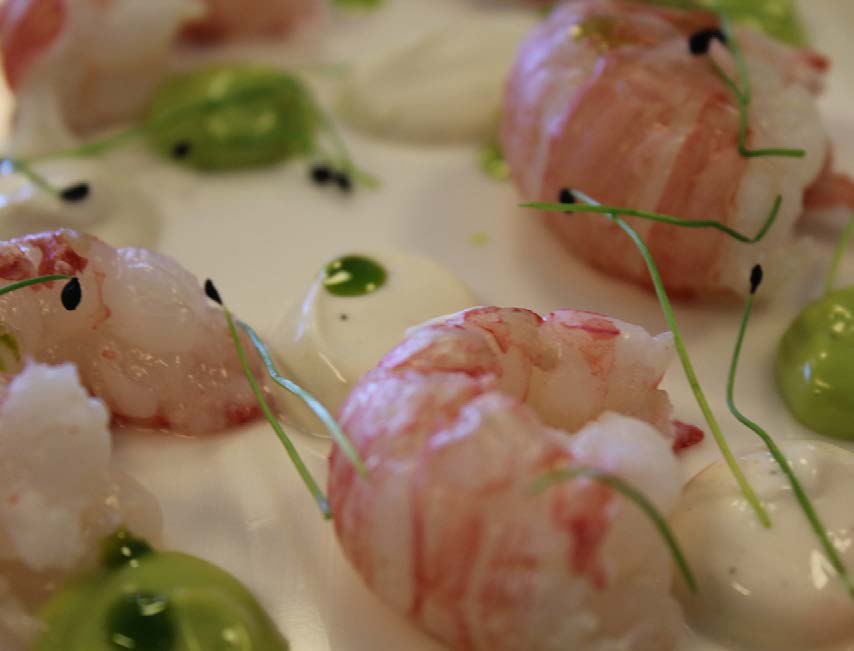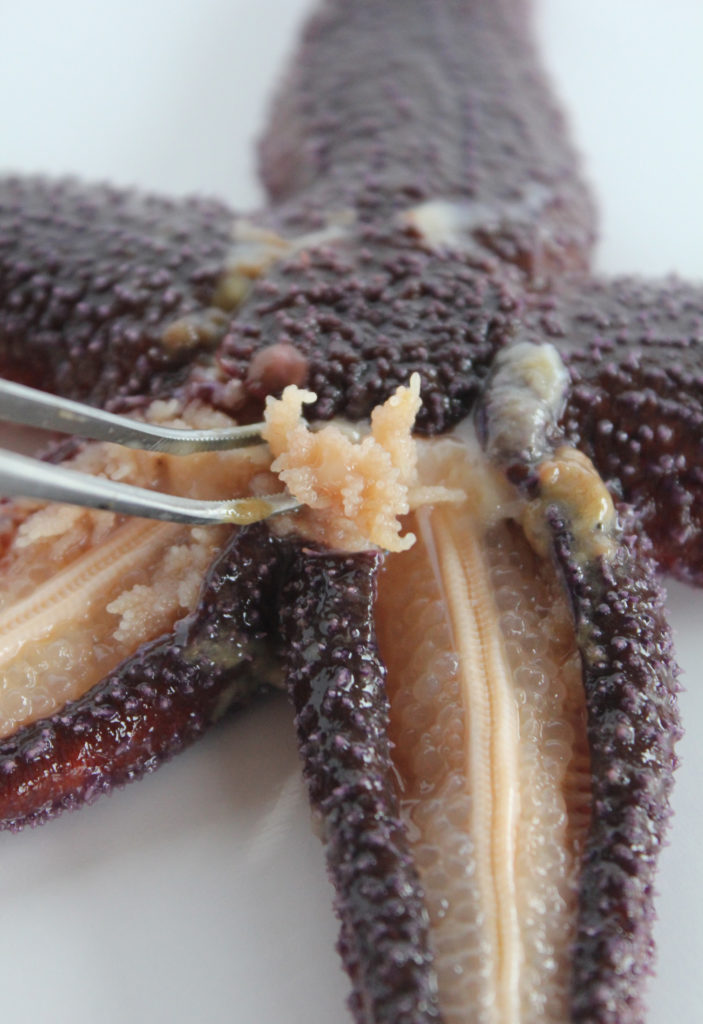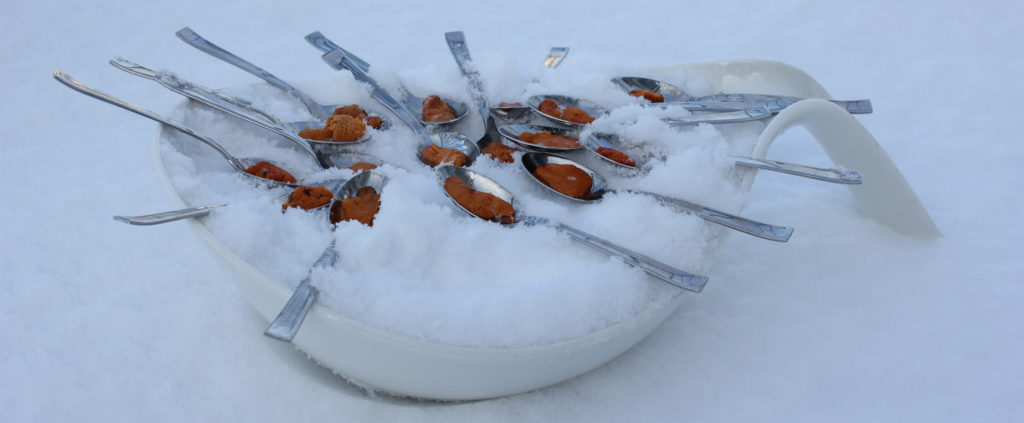By Ben Reade
What about the oceans? About 2/3 of the surface of the planet is salt water, and the diversity of edible species waiting to be discovered or rediscovered is enormous. During the last month or so Nordic Food Lab had the opportunity to explore the delights of the salt water world, working with fishermen and suppliers to help them promote the best, which is often not the most obvious.
So from collecting periwinkles and limpets (perhaps the abalone of the north) along rocky shorelines, to hand-dived arctic urchins and Faroese langoustine we are presented with a host of luxury ingredients. These are very difficult to improve upon through processing, and more often than not are best served raw or almost raw very simply to allow the true character of the ingredient to shine through.
A north Atlantic delicacy, langoustine is a sweet and delicious treasure when it is in premium quality but can easily arrive to chefs long dead and far too long frozen. The small archipelago of the Faroe Islands, halfway between Northern Scotland and Iceland is perhaps the home of the world’s biggest and best langoustine. Peeled raw from a living specimen provides what must be some of the sweetest sashimi it’s possible to eat. It’s only really possible to peel them raw if they are still alive, otherwise a quick dip into boiling water will be necessary to bring the membrane away from the meat making peeling possible. Here we have served the tails blanched for 15 seconds with oyster and tarragon emulsions and chive sprouts.
Famously known as ‘uni’ in Japanese, sea urchins are delicious and also very interesting from a pharmacological point of view – Many species of urchin contain the cannabinoid Anandamide which has been shown to produce feeling of both bliss and hunger: could urchins be a perfect start to a winter meal?

Searching for new or unusual things to eat is a favourite pastime of ours and enjoying our urchins so much we had to wonder what else might be there in the same family. Urchins are Echinoderms, a phylum of species which includes sea cucumbers and starfish. Sea cucumbers are harvested for food in pretty large numbers especially in Southeast Asia where they are considered a delicacy – although one must be careful to prepare them properly not to ingest the poisonous parts. We got pretty excited about working with starfish. Again, starfish are eaten – but the only record I can find is in China and it appears they have more novelty value, being sold in markets alongside fried scorpions and other such oddities. However, do starfish offer another abundant source of good food? In our preliminary trials we found that both the gonads (in tweezers in the photo below) and the digestive apparatus of various different species can be eaten, and some species seem to taste better than others. We’ve now boiled, dried whole, dried separate organs, roasted, fried and eaten raw a number of different species and we will be continuing this investigation throughout the year to see how these various species change through the seasons. Bear in mind, many species in the Echinoderm phylum contain toxins which can be fatal – take your time, and do your research properly before you put anything in your mouth!


